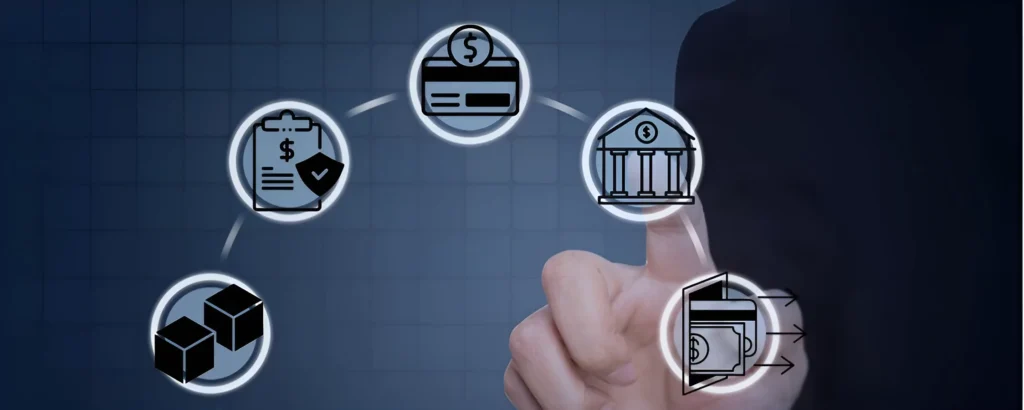By now, almost every industry has been impacted by rapid technology changes and rising connectivity. However, few sectors have seen as much disruption as financial services over the past decade through the emergence of what we now call “fintech.”
What is Fintech?
Fintech short for financial technology, fintech involves the application of innovative digital solutions, systems, and processes to enhance and optimize the delivery of banking, investments, lending, payments, and other financial services globally.
While concepts like digital banking or peer-to-peer lending date back to the early 2000s, it was following the 2008 Global Financial Crisis that fintech transformed from a nascent niche into mainstream worldwide disruption. Consumers lost faith in traditional institutions and sought alternatives offering more accessibility, price competitiveness, and personalized experiences. Meanwhile, banks struggled with legacy infrastructure as expectations and possibilities shifted in a tech-driven, mobile-centric society.
This presented the opportunity for agile startups armed with modern tools to challenge incumbents, fueling an explosion of fintech innovation and investment that continues to increase exponentially each year. Today, fintech encompasses a sprawling landscape spanning numerous interrelated categories from digital payments and lending to wealthtech, cryptocurrencies, and more.
Origins and Early Milestones
While the first inklings of digital disruption in financial services trace back to at least the 1990s, three major catalysts cemented fintech’s trajectory in the 2000s:
- P2P Lending/Payments – Sites like Zopa (2005) or Paypal (1998) pioneered marketplace lending and electronic money transfers outside traditional systems.
- Mobile Banking Advances – The iPhone’s 2007 launch sparked a shift towards ubiquitous mobile connectivity powering new personal finance apps.
- 2008 Crisis Aftermath – Fallout from the crisis eroded trust in big banks while startups spotted opportunities in underserved niches like lending.
Early leaders demonstrated possibilities of streamlining tasks via APIs, data, and digital user experiences challenging slow incumbents. Governments globally passed laws facilitating online/digital financial innovation. Successful exits and continued venture backing kept momentum climbing into the next decade of explosive global fintech growth and maturation.
Fintech Categories and Business Models

Today’s fintech comprises many interconnected verticals addressing specific customer pain points with tailored technological solutions. Major sectors encompass:
- Digital Payments – Enabling omnichannel money transfers globally through services like Square, PayPal, and Stripe.
- Lending – Peer-to-peer lending marketplaces connect borrowers and investors via LendingClub, and Prosper. Others automate underwriting via alternative data streams.
- Crowdfunding – Equity/donation sites like Kickstarter or GoFundMe help fund creative/charitable projects.
- Robo-Advising – Automated digital advisors invest clients’ portfolios through algorithms at low costs.
- Insurtech – Technologies boost insurance underwriting efficiency and streamline claims processes.
- Blockchain – Distributed ledger networks underpin cryptocurrencies while exploring applications across finance and other sectors.
- Wealth & Asset Management – Ranging from robo-advisors to portfolio analytics tools powering investment decisions.
- Banking-as-a-Service – Digital banking infrastructure offered via open APIs to traditional and challenger banks.
Newer verticals in digital trading/banking and embedded finance continue to emerge, demonstrating fintech’s dynamism and capacity to reinvent all aspects of the customer financial journey.
Global Spread and Future Opportunities
What began as a niche segment now comprises a massive worldwide industry ecosystem estimated between $105-$115 billion in value. Leading countries driving the most fintech innovation and investment include the US, UK, Germany, India, and China where digital payments dominance took hold earliest.
Exponential growth opportunities abound across sectors, with global payments predicted to become a $10 trillion industry powered by blockchain and real-time rail capabilities. Roboadvising assets may triple to $16 trillion by 2023. Embedded and decentralized finance integrating APIs universally across industries represents the next frontier. Advancements in artificial intelligence, IoT, quantum computing, and biometric security will spawn entirely new verticals and business models over the coming decades.
Regulation Balancing Act
As an immature, rapidly evolving sector disrupting traditional structures and incumbents, fintech also presents challenges around ensuring financial stability, consumer protection, market integrity, ethical standards, and combating risks like cybercrime or money laundering. Each country takes varied regulatory approaches balancing oversight and oversight avoidance constraining innovation. RegTech simultaneously emerges assisting compliance through technologies like AI and blockchain.
Main considerations revolve around data privacy/security, investor protections during crowdfunding rounds, digital wallet/banking standards, partnership/vendor assessments between startups and institutions, special licenses or tests for new business models, and opportunities to align outdated rules impeding progress. Close coordination between private industry and regulators seeks balanced solutions sustaining stable, equitable development.
Partnerships Key to Maturity and Inclusion
An emerging consensus recognizes both startups and established firms wield complementary strengths serving evolving customer demands. Collaboration between “fintech and big banks” leverages respective agility, new technologies, and widespread trust/scale. Partnerships deliver richer products combining institutional support with outside innovations through open banking APIs.
Together they can expand access reaching demographics traditionally excluded due to a lack of physical infrastructure or high fees. From digital ID networks to embedded banking points-of-sale solutions, blended models reinforce responsible inclusion alongside efficiency and customer service excellence as core priorities of maturing fintech at large.
Conclusion
In summary, technologies like AI, cloud computing, and blockchain have collectively spawned an immense fintech wave transforming how financial services are delivered to consumers and businesses globally. Combining the best attributes of both legacy finance and modern innovation, this fast-evolving sector promises sustained improvement in inclusion, personalization, price competitiveness, and tailored solutions reimagining the customer journey. Through diligent cooperation between private industry, policymakers, and communities themselves, fintech’s ongoing evolution holds tremendous potential to enrich lives and economies worldwide responsibly.








